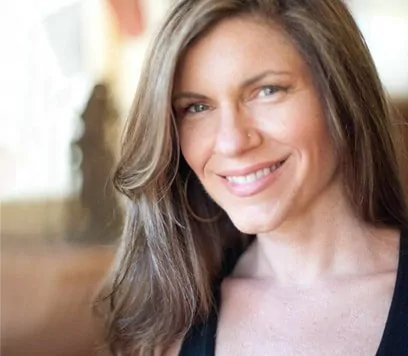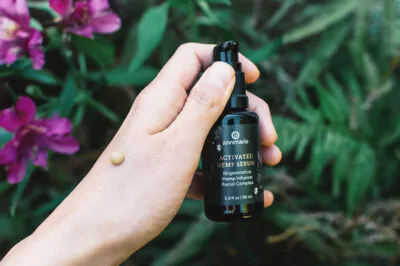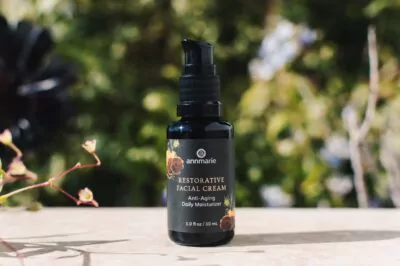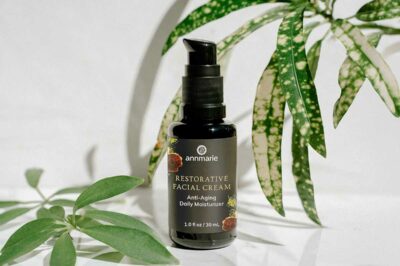Table of Contents[Hide][Show]
I’m no supermodel…
In fact, obesity, hair loss, anxiety and Alzheimer’s disease run in my family—not a pretty genetic picture for middle age and later life. My mother ate sparingly while pregnant with me, as was the fashion in 1967, an era of Twiggy and miniskirts. Mom’s diet turned on my famine genes while my chromosomes were being knit in her womb, meaning that I’ve had a lifelong struggle with blood-sugar problems and rapid weight gain (a lot more on these topics later). I’ve grown up idolizing actresses such as Katharine Hepburn, Sigourney Weaver, Diane Keaton and Julia Roberts. They were slim and tall, but I was pudgy and short.
Now, when I start to wonder why it’s so freaking hard to stay mentally and physically fit at fifty, I remind myself that my genes program me to be a two-hundred-pound anxious diabetic with thinning hair. All things considered, maybe I’m not doing so badly.
Think about Angelina Jolie, Jennifer Lopez, Julianne Moore, Gisele Bündchen and Helen Mirren. It’s easy to believe they won the genetic lottery. Perhaps they hail from a long line of superwomen with flawless skin, flat bellies, perfectly balanced hormones, and fast metabolisms.
It’s their job to look amazing, and they are extremely motivated to look good as long as possible as they age. Their taut abdominals and gravity-defying posteriors grace billboards, Victoria’s Secret catalogs, and Sports Illustrated covers. They have proportionally similar metrics: Gisele Bündchen, the world’s highest-paid model, is five feet eleven and weighs 126 pounds, and her bust-waist-hip measurements (in inches) are 35–23–35. Angelina Jolie is five feet eight, weighs 128 pounds, and measures 36–27–36. Their paychecks and magazine gigs depend on their enviable measurements. Even in her sixties, at five feet four and with 37– 27–38 measurements, Helen Mirren rocked a coral bikini on a beach in Italy, looking better than me and most of my girlfriends.
That’s great for those women, but the rest of us flounder. I don’t know about you, but sometimes I feel like I was born to wrestle with my weight, skin, energy, and sex drive. In college, my weight ballooned. In medical school, my skin broke out and my adrenals broke down because of stress. I craved sugar and carbs and rarely ate vegetables. I drank gallons of coffee, hardly slept for a decade, and bought fat jeans. Then I had two kids. Need I go on?
Maybe you’ve been told that your muffin top or memory problems aren’t your fault; they are simply programmed by your genes. It doesn’t seem fair. When I was in my forties, my battle only seemed to get harder as I navigated the challenges of crazy work hours, perimenopause, grief, breast lumps, aging parents, tight clothes, travel, and stress. Eventually, I learned that there’s a spiritual lesson in my battle with age and that my mess is my message.
The female body is magnificent, but it doesn’t come with a lifetime warranty or an owner’s manual. You’re the result of millions of years of evolution, but many of the adaptations that helped your ancestors survive are now making you fat and wrinkly and are no longer needed. But your genetic code—the DNA sequence that is the biochemical basis of heredity in all living organisms—is only a small part of the story. Your DNA is a unique, one-of-a-kind blueprint that is specific to you. Even if you haven’t been dealt platinum genes, you can still look great and age more slowly.
The fact is that scientists have found new ways for us to take control of our genes. For example, the naughty aging genes usually associated with fat and wrinkles can be altered with diet, exercise, and other lifestyle choices. Simply put, by turning your good genes on and your bad genes off, you can actually prevent aging—no matter how old you are.
Gisele’s measurements are unattainable for the average American woman—who is five four and 164 pounds with a thirty-eight- inch waist—but even if you have fewer of the good genes and more of the bad genes, you can still lose weight, improve your skin, and change how your DNA controls your body and mind. You don’t even need a large staff of trainers and chefs to hold you to your exercise regimen and diet; you can appear to have lucky genes whether or not you actually have them. The truth is that around 90 percent of the signs of aging and disease are caused by lifestyle (and the environment created by your lifestyle), not genes. The neighborhood of your body—how you live and the world you create, internally and externally—is more important than your DNA when it comes to how you look and feel now and for the next twenty-five to fifty years. So let’s clean up your neighborhood.
How I Came Up with the Younger Protocol
I started testing my own and my husband’s DNA in 2003, when I was considering pregnancy. We were looking for genetic problems that our daughter might inherit and, fortunately, came up empty-handed. In 2005, I started testing more genes in myself. Why? I wanted to find out the ideal food plan for my body, the most expedient ways to lose weight, the best supplements to take, the most effective exercise regime, and what else I had passed onto my kids. Our genes mostly control enzymes that in turn influence micronutrients, detoxification, and metabolism. Based on the results of those tests, I added B vitamins, methylated folate, and vitamin D to my daily supplement regimen. Then I started high-intensity interval training. Hallelujah! My long-standing depression disappeared almost overnight, my weight dropped, and my energy soared. I knew I was onto something important.
A few months later, not long after giving birth to my second daughter, I headed to yoga class by myself on the weekend; my husband stayed home to bond with our girls. In class, we were about to move into the peak pose, a difficult arm balance called side crane. Attempting it usually sent me toppling to one side or another. I looked down at my postpartum belly, still bigger than I wanted it to be. I could feel my breasts filling with milk; it had been a few hours since I last breast-fed my baby. Following the teacher’s detailed instructions, I planted my hands on the mat in front of me, twisted my legs to the right, engaged my core, and took flight! Up went my legs to rest on a spot just above my right elbow.
My legs stayed put, and I was perfectly balanced. I was solid—and fervent and, at that moment, didn’t care. I marveled at how my body had managed to retain some vestige of core strength despite the fact that I’d recently pushed a small basketball- size baby through my pelvis. As the instructor advised us to unwind, I reluctantly came down.
Afterward, I rushed home to tell my husband. “Babe, it was amazing—side crane! My center of balance is shifted, as if my body changed for the better after having two kids. I could have held the pose forever.” I paused and then said, “Wow, my body is older, better, and wiser than before!”
David responded with something like “That’s great; here, feed the baby,” but I knew I couldn’t ignore this dramatic change. Even after all my decades of medical education, I never thought the body could get better with age. But now I had proof. It was just the spark I needed to consider the ways that my environment, the sum of all of my lifestyle choices, affected the way my DNA communicated within my body. Just as having a baby, trying to reclaim my body with core work, and a shift in my center of gravity had made me successful at mastering a difficult yoga pose, perhaps my patients could partner with me to determine how to become successful at mastering the targeted lifestyle choices that would best express their DNA.
Hacking Your Environment
You’re not going to believe this, but the truth is that around 90 percent of the signs of aging and disease are caused by lifestyle (and the environment created by your lifestyle), not genes.1 The neighborhood of your body—how you live and the world you create, internally and externally—is more important than your DNA when it comes to how you look and feel now and for the next twenty-five to fifty years.
I love the axiom that genetics loads the gun, and the environment pulls the trigger. Genetic factors and environmental factors don’t work on their own—they interact. Even if you have lousy genes, you can change your health destiny by managing your exposures. It means that you have the power to get your body to work for you instead of against you. You can actually adjust epigenetics up or down by tweaking what’s known as your exposome, a collection of environmental factors that directly or indirectly affect your health. You control your exposome by your daily habits of body and mind, both conscious and unconscious, including how often you move and what form that movement takes, what environmental exposures you have in your home and office, what you eat and drink, and how you manage or mismanage your hormones. When one gene is turned on by a certain exposure, another gene may be turned off. And in this way, the goal of the Younger protocol is to optimize all the bodily systems, while turning off the bad genes and turning on the good ones. The end result is the magic elixir that so many of us have been chasing – the ability to turn back the clock.
Excerpted from YOUNGER: A Breakthrough Program to Reset Your Genes, Reverse Aging, and Turn Back the Clock 10 Years, available now for order.
Copyright ©2017 by Sara Gottfried, published by HarperOne, an imprint of HarperCollins Publishers.
References
1. ↑ Rappaport, S. M. “Implications of the exposome for exposure science.” Journal of Exposure Science and Environmental Epidemiology 21, no. 1 (2011): 5–9; Rappaport, S. M., et al. “Using the blood exposome to discover causes of disease.” Agilent Technologies, September 15, 2015, accessed February 9, 2015, www.agilent.com/cs/library/technicaloverviews/Public/5991–3418EN.pdf; Harmon, K. “Sequencing the exposome: Researchers take a cue from genomics to decipher environmental exposure’s links to disease.” Scientific American, October 21, 2010, accessed February 2, 2016, www.scientificamerican.com/article/ environmental-exposure.
About Sara Gottfried MD

Sara Gottfried, MD is the author of the new book, Younger: A Breakthrough Program to Reset Your Genes, Reverse Aging, and Turn Back the Clock 10 Years. She’s the two-time New York Times bestselling author of The Hormone Cure and The Hormone Reset Diet. After graduating from Harvard Medical School and MIT, Dr. Gottfried completed her residency at the University of California at San Francisco. She is a board-certified gynecologist who teaches natural hormone balancing in her novel online programs so that women can lose weight, detoxify, and slow down aging. Dr. Gottfried lives in Berkeley, CA with her husband and two daughters.








LOVE this! I always love reading your posts!
Love Sarah Gottfried and I’m looking forward to her new book. Totally agree that lifestyle is the most important thing, and can totally overcome crappy genetics. There is no reason we can’t look and feel amazing!
What do all we non doctors have to do to get our genes tested and how do we then know what supplements, exercises to incorporate into our daily life to arrive at optimum, like Dr Sara did? Liz
Hello Sarah:
Although my gender is male not female, I found your article highly readable and encouraging. You’ve encouraged me to make exercise more of a mainstay in my life. Right now, I struggle to get out of the office and to the gym, but your words reminded me how critical it is to exercise, a matter of quality life and life itself. Your use of the term ‘exposome’ is new to me, so I appreciate expanding my knowledge and gaining more insight into how I can ‘turn on’ and coax my dna.
Hope you are still doing side cranes, daily!
Excellent insight, realization and sharing Dr. Sara! I’m glad you are sharing about Epigentics and the ‘on-off gene switch! I am a lifelong Source guided intuitive and as such receive and ‘know’ things long before others ‘uncover’ them. I don’t intuit inaccurate information. I was telling people about genetics being just a set of “light switches” that have been installed long before the term “epigenetics” was created. (and yes, everyone I told thought I was nuts!) I was thrilled when the “science of Epigenetics” came into being.
It is really up to you whether you turn them your genetic “switches” on or off! Aging younger is absolutely possible! It only takes awareness, knowledge and attention. Everyone should embrace this science of “genetic light switches” called Epigenetics … it truly takes the power over your life expression back from those mysterious genes and places it back in your attentive and caring hands!
I enjoyed reading Sara’s blog.